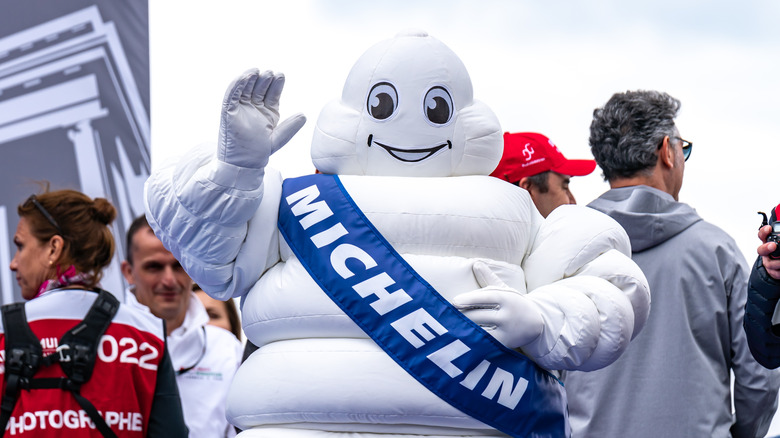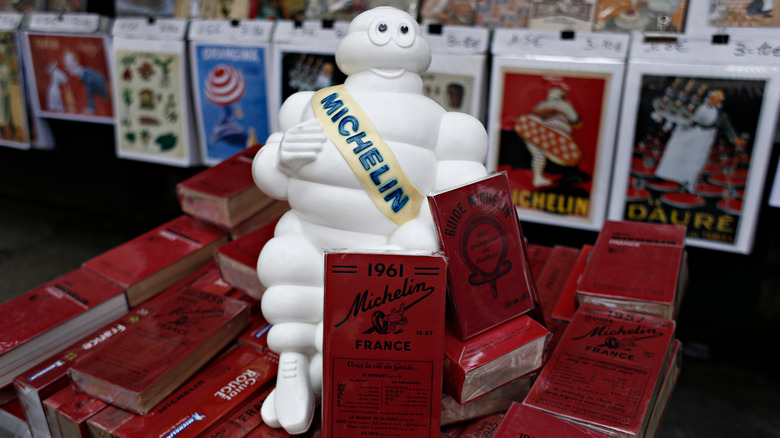Yes, Michelin Stars Are Awarded By The Tire Company
When someone says the word "Michelin," what do you think of? If you're a foodie, you may think of those Michelin star ratings that top-tier restaurants around the world are all striving to earn. If, on the other hand, you've recently had a flat tire or have had to deal with other car maintenance issues, your mind may instead turn to the tire company of the same name. You might even think of the Michelin Man, particularly if you're a big fan of the movie "Ghostbusters," in which the Stay Puft Marshmallow Man, who so closely resembles the tire mascot, is heavily featured.
You may be surprised to learn, however, that Michelin restaurant stars actually come from that very same tire company — you could even consider them another Michelin mascot, albeit more highfalutin than an anthropomorphic pile of tires. In fact, there's also a gastronomic tie-in since Michelin's puffy, white bon vivant is named Bibendum, a Latin word meaning "to be drunk." How did this happen? It's all because of a travel pamphlet Michelin offered in its early days, inside of which you could find restaurant recommendations for any location your motoring heart desired.
How a tire company started recommending restaurants
The Michelin tire company was founded in France in 1889, at which time both cars and motoring were fairly new. In order to promote the latter — and, by extension, the former, which would require a steady supply of the company's product — Michelin began publishing pamphlets for travelers. These publications not only included maps and information on basic car maintenance but also featured lists of recommended restaurants and lodgings along their routes, much like a 19th-century version of the local guides you sometimes find today in hotel lobbies. While these pamphlets were initially given out for free, after 1920, it would cost folks a few francs to purchase a Michelin Guide.
Once the company started making people pay for its reviews, it also upped its game and assembled a team of "mystery diners" to assess restaurants. In 1926, it began awarding stars to the best establishments, and by 1931, a restaurant could earn two or even three stars if it was extra special. It was another five years before Michelin disclosed the rubric it used to award its star ratings.

